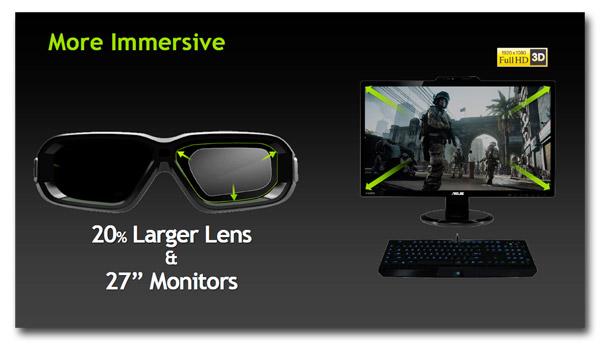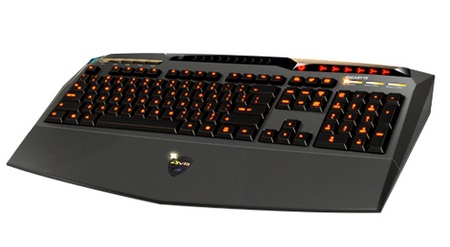Author: MAC
Date: May 30, 2011
By now everyone reading this article should know that AMD is on the cusp of releasing their eagerly anticipated Bulldozer architecture. On the desktop side of things, Buldozer will be released as processors with the Zambezi designation. Naturally, these new 8-core CPUs and their derivatives will use the AM3+ socket so new motherboards will be released to support them. Enter the 990 series of chipsets, a slightly different spin on the outgoing 890 series. For the purposes of this article we will be concentrating upon the enthusiast-oriented 990FX chipset.
The differences between the 890FX and the new 990FX chipsets are much less significant than the name change would have you believe. Truth be told, the 990FX Northbridge is basically a carbon copy of its predecessor with a slight change in the microcode structure in order to support the unique needs of AM3+ CPUs. It is paired with a 950 Southbridge which is nothing more than a rebadged SB850 chip. Luckily, the SB850 was forward looking enough that changes weren’t necessary as it already supports SATA 6G. Combined, the “new” Northbridge / SouthBridge combination has more enough PCI-E 2.0 lanes to support any current third party USB 3.0 controller as well.
AMD’s “new” range of 900-series motherboards spans the upper end of their market and will initially consist of the 990FX and 990X chipsets.
The “990FX” may indeed sound new but it is nothing more than an 890FX with updated microcode to support upcoming Zambezi processors while the 950 Southbridge is simply a rebranded SB850 chip. Is this a bad thing? Well, we don’t think so because the 890/850 combination used on previous boards proved to be forward thinking enough that many of its features (like SATA 6G and USB 3.0) are still in their infancy and have a long way to grow.
One of AMD’s most distinguishing features over the last few product generations has been their commitment to offering backwards compatibility for their motherboards and forwards compatibility on the processor end of things. Even though the 990FX series boards will feature support for upcoming AM3+ processors, the socket layout makes them compatible with all current AM3 processors as well. This will allow current and slightly older processors to be used on these boards. So while 990FX may not seem like an upgrade for 890FX users, it is a no-brainer purchase for people who want an AMD platform now but are worried about what’s coming down the pipeline.
While Intel has transferred most of their Southbridge functionality to their processor die, AMD has staunchly adhered to a two-part chipset configuration consisting of a Northbridge and a Southbridge. We have seen this layout persist through the 790FX days on to the 890FX and now once again on the 990FX. This may change in the future, for the time being all current AM3 processors and upcoming AM3+ products only feature on-chip DDR3 memory controllers while all the I/O and expansion slot functions are handled through the chipset. We also get native support for DDR3 1333Mhz memory while the processor and 990FX Northbridge communicate through a Hypertransport 3.1 link at 6.4 GT/s. Yes, that's an upgrade which will likely benefit processors.
The Northbridge of AMD’s two-chip solution acts as a controller hub for most of the board’s PCI-E 2.0 lanes and facilitates communication between the SB950 and the processor. The 32 dedicated graphics card lanes are split up into either two 16x slots or can be evenly dispersed for up to a quartet of 8x slots which gives the boards incredible flexibility for multi GPU setups.
After a long hiatus, SLI finally sees the light of day on an AMD chipset with support through NVIDIA’s driver stack. This is a huge step for both AMD and NVIDIA and it could open up some new markets for these motherboards.
Meanwhile, the remaining ten PCI-E 2.0 lanes are divided up into one grouping of four lanes while an additional six lanes 1x lanes can be dispersed as needed for integrated components like audio and networking controllers.
This layout tells us a thing or two about the Bulldozer-based Zambezi CPUs which are due out in the coming months. It seems like their baseline interface with supporting motherboards hasn’t changed much from the current generation of processors which means they’ll retain the on-die memory controller while supporting DDR3 speeds of 1333Mhz. This can be counted as a good thing for consumers and motherboard manufacturers alike since motherboards will likely stay relatively inexpensive compared to their Intel competitors.
Moving on down to the SB950, we see that AMD has once again foregone any updating as the layout is absolutely identical to that of the SB850. The chipset interconnect still uses a 2GB/s interface dubbed “Alink Express III” which essentially uses four PCI-E 2.0 lanes to speed up on-board communications.
Speaking of the Southbridge, we see that AMD has retained 6Gbps SATA support but still hasn’t progressed to native USB 3.0 support. Third party USB 3.0 controllers can be interfaced to the Southbridge or Northbridge chipsets using the 1x PCI-Express 2.0 lanes for a maximum theoretical throughput of 500MB/s.
As with almost every past AMD isn’t about to let their clientele out in the cold so the 990FX is backwards compatible with current AM3+ CPUs. So you can buy in confidence without worrying about any upgrade paths closing a few months down the road.
It seems like this new chipset and the upcoming Bulldozer processors have sparked quite a bit of interest among certain industry circles. Some motherboard manufacturers like ASUS will be adding features to their 990FX boards which weren’t seen on previous generations. Things like UEFI support, SLI certification (with NVIDIA’s blessing) and dynamically expanded overclocking options were all MIA from the 890FX boards but will now be included alongside an AM3+ socket.
An expanded set of capabilities doesn’t necessarily mean that 990FX boards will begin edging up in price either. Take the subject of today’s review for example: the ASUS 990FX Sabertooth. It sports a laundry list of features alongside components which are durable enough that ASUS gives it a 5-year warranty. It’s price? $209 before rebates. If that isn’t tempting, we don’t know what is…




 As we have come to expect from ASUS, this motherboard has a well though out layout. The 8-pin CPU power connector, 24-pin ATX power connector, eight SATA ports, USB 2.0 and FireWire headers are all ideally located on the edges of the motherboard. We do however wish that the front panel USB 3.0 header was located at the very bottom of the motherboard, instead of below the memory slots where effective cable routing/hiding can be little more difficult.
As we have come to expect from ASUS, this motherboard has a well though out layout. The 8-pin CPU power connector, 24-pin ATX power connector, eight SATA ports, USB 2.0 and FireWire headers are all ideally located on the edges of the motherboard. We do however wish that the front panel USB 3.0 header was located at the very bottom of the motherboard, instead of below the memory slots where effective cable routing/hiding can be little more difficult.This motherboard features a new 8+2 phase DIGI+ VRM digital power design, which is similar to the one we saw on the P8P67 PRO. Part of the DIGI+ VRM design are the Dual Intelligent Processors 2 (DIP2), consisting of the independent EPU (Energy Processing Unit) and TPU (TurboV Processing Unit) controllers. Thanks to the digital VRM and the TPU controller, this motherboard has extremely precise 0.005V voltage increments, five levels of Load-Line Calibration (LLC), very fast VRM phase switching with fine 10KHz switching frequency adjustments. The EPU controller monitors CPU loading and controls the number of active power phases, while also adjusting the voltages and multipliers on-the-fly in order to regulate power consumption. It is also connected to the chipset and memory VRMs, and optimizes their power efficiency as well. The main benefits of this new DIP2 design are that you can have full control over the system settings without using any CPU resources, and it’s no longer necessary to choose between power management (EPU) and overclocking (TPU).
From what we can tell right now, all of these new AM3+ motherboards will feature a black socket. It is a minor but effective way of differentiating AM3+ from the older AM2/AM2+/AM3 sockets. Those with eagle eyes will also notice that the AM3+ socket on this Sabertooth model features two small raised parts whose purpose is currently a mystery to us. We also believe that the pin holes look slightly wider, but don’t quote us on that.
Another distinctive change is the two-part heatsink mounting bracket, which differs from previous implementations, but also appears to be a ASUS-specific change instead of one mandated by AMD.
The two CPU fan headers are a terrific addition that we hope becomes a standard feature on all slightly higher-end motherboards.
While the MOSFET heatsink is obviously a very robust looking piece, what really draws the eye is its unique texture. It is covered in CeraM!X, which is ceramic coating technology that ASUS only uses on The Ultimate Force (TUF) series motherboards.
This model only features one perfectly located 8-pin CPU connector, which is probably a good sign that AM3+ processors will not be power hogs, at least we are hoping.
The Sabertooth 990FX has a pretty cool looking northbridge heatsink to our eyes. Part of this is obviously due to the CeraMIX coating that gives it a really gritty appearance. This heatsink doesn’t feature a particularly high fin density, but the way the fins are spaced ensures that they can really make use of any available airflow. The northbridge cooler is connected to the MOSFET heatsink via a flattened copper heat-pipe.
The Sabertooth’s DDR3 memory slots officially support up to DDR3-1866, which is one of the benefits of the 990FX chipset, but ASUS have also validated this motherboard for overclocked operation up DDR3-2000. The 2-phase power design for the memory slots will have no issues handling the load. We are glad to see that ASUS are continuing the user-friendly Q-DIMM memory slot design, which is clip-less on one end. The reason for this innovative design is simply to make it easier to remove the memory modules.
In the top-right corner is the MemOk! button, which can be used to fix any memory compatibility issues in order allow the system to boot. As we come to expect, the 24-pin ATX power connector is right on the edge of the motherboard, exactly where it should be.

This motherboard comes with a front-panel USB 3.0 header, and is one of the first to feature the new ASMedia ASM1042 USB 3.0 host controller, which as you will see later has much better performance than previous USB 3.0 implementations.
The modern looking and low profile southbridge heatsink also features the unique ceramic-coating. It really doesn’t have much to cool, so form over function is not really a big deal in this case.
This motherboard features 8 right-angle SATA ports, 6 of which are supplied by the ‘new’ SB950 southbridge, which is identical to the previous SB850 southbridge. These six brown ports are all SATA III 6Gb/s and support RAID 0,1,5,10, JBOD, while the two black ports are SATA II 3Gb/s and come from a JMicron JMB362 controller.
Full review from Hardware Canucks for the "ASUS Sabertooth 990FX AM3+ Motherboard"













































